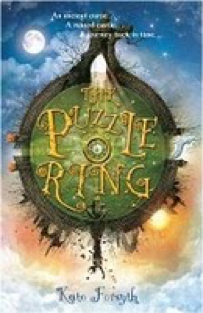
I used to love reading time travel adventures when I was a child. They were one of my favourite genres of fiction, and I’ve always wanted to write one.
When I first began daydreaming about the story that would become ‘The Puzzle Ring’, it seemed to me to be the perfect opportunity to finally write that time travel story. As part of my research into writing the book, I went back and revisited some of my favourite time travel books, interested by how they managed the slippage back in time, and articulating some of the difficulties a contemporary child would have in what is essentially a foreign world.
Here is a list of my favourite time travel books for those of you who want to go on and read more ...
1906 - Rudyard Kipling, Puck of Pook's Hill
I loved this book when I was about 11, reading it over and over while I was on holiday at my great-aunt’s one year. My nickname was Puck for a long time afterwards. It is about a brother and sister who met the mischievous Puck of Pook’s Hill, and he magically transports them into different periods of English history. At one point I thought of structuring ‘The Puzzle Ring’ in the same way, but in the end I decided to choose just one favourite period of history – the last winter in the tragic reign of Mary, Queen of Scots ...
And Rudyard Kipling’s advice to people who want to write: “Gardens are not made by singing "Oh, how beautiful," and sitting in the shade.”
1906 - Edith Nesbit, The Story of the Amulet
This is the last book in the series that begins with Five Children and It (which was made into a movie a few years ago). ‘The Story of the Amulet’ tells of the adventures of the five children as they go back in time to various places like Ancient Egypt, and Atlantis just before it floods. They even go forward in time to a wonderful utopian future. I loved these books, and particularly liked the way each of the characters seemed like real people.
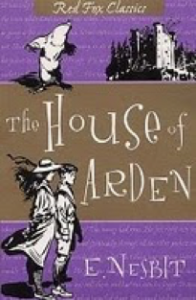
1908 - Edith Nesbit, The House of Arden
‘The House of Arden’ has always been my favourite Nesbit novel. It’s about a boy who inherits a crumbling old castle when he is close to his tenth birthday but to his consternation he will only be able to keep it if he can find the lost Arden fortune before his birthday. He and his twin sister and a magical talking creature travel through time searching for the treasure. Like the previous books, they visit many different periods, and it’s tremendously exciting, with lots of encounters with highwaymen and the like. This book was definitely a very strong influence on me, particularly when I first began to conceive the story of ‘The Puzzle Ring’.
1939 - Alison Uttley, A Traveller In Time
Another favourite book from my childhood, this book tells the story of Penelope, who slips back and forth between her own time (1930s England) and Elizabethan times. This novel was one of the things which first began my fascination with Mary, Queen of Scots, because in this novel the house, Thackers, is owned by the Babington family, who famously tried and failed to rescue the Scottish queen while she was imprisoned by her cousin, Elizabeth I.
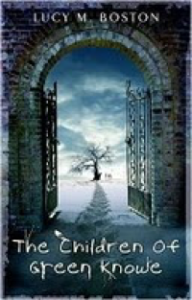
1954 - Lucy Boston, The Children of Green Knowe
Not many people have read Lucy Boston anymore which I think is such a shame. I loved this book as a child, and loved it just as much when I read it again while writing ‘The Puzzle Ring’. It’s very different from the other books, being quieter and more reflective, and young hero Tolly never actually goes back in time. Instead, his great- grandmother Mrs Oldknowe tells him vivid, exciting stories about the past which seem to imbue the house with the spirits of the past. There is a sense of the past being always with us, and the house and garden itself worked itself deep into my imagination. It was based on Lucy Boston’s own house, The Manor, in Hemingford Grey, Cambridgeshire, which was built in the 1130s and lays claim to the oldest continually inhabited house in the UK. Part of me still longs to live in a house filled with ghosts of the past. The BBC made a TV series based on the book.Lucy Boston once wrote: “I believe children, even the youngest, love good language, and that they see, feel, understand and communicate more, not less, than grownups. Therefore I never write down to them, but try to evoke that new brilliant awareness that is the world.’
This is what I try and do too.
1958 - Philippa Pearce, Tom's Midnight Garden
‘Tom’s Midnight Garden’ won the Carnegie Medal in 1958, and is considered one of the great classics of English children’s literature. I think it is utterly enchanting, and perfect in every way. It’s one of those books that stay with you forever after.
Tom is sent to stay with his aunt and uncle in a boarding house when his brother gets measles. Bored to tears, he has nothing to do and wishes the old house had a garden in which he could play. That night he hears the old grandfather clock in the hallway downstairs strike thirteen, and runs downstairs to investigate. He finds the hallway opening on to the most wonderful garden, and explores it in absolute delight. Soon he meets a girl called Hattie, who he discovers lived there in the 19th century. She thinks Tom is a ghost, while he thinks she is – they argue about it and it makes Tom uneasy. As the days pass, Hattie grows up while Tom stays the same. The time comes for Tom to go home, but he doesn’t want to go – the midnight garden as become more real, more important to him than his real life. The ending is one of the most perfectly executed and moving moments in children’s literature – I feel the catch of breath, the sting of tears, every time I read it.
An amusing anecdote: when Philippa Pierce went to Buckingham Palace to collect her OBE, the Queen asked her, ‘Where do you get your ideas from?’ To which, Phillipa Pierce replied ‘Harrods.’ I just love that.
1966 - William Mayne, Earthfasts
I did not read this book as a child, but bought it over the internet while I was writing ‘The Puzzle Ring’ as it has been called a classic time travel adventure. Its quite different from any of the books above. It is set in contemporary times (well, in the late 1960s anyway), and tells the story of two boys who hear drumming under the hill and set out to investigate. Then a boy from the 18th century unexpectedly marches out of the from under the hill and out of his own time. The boys try and help him to go back, but this has all sorts of strange and spooky consequences. One of the boys discovers the candle the drummer boy was carrying gives off cold rather than heat, and does not burn down. Strange things begin to happen – all the pigs disappear and instead wild boar rampage through the town. Standing stones walk. Slowly we come to realise that a king and his knights sleep under the hill and the drummer boy has woken them too soon – and trying to reverse this mistake may well cost the boys their lives. Many of what happens is never explained, so the book retains a sense of mystery and creeping suspense which is very effective. It’s been turned into a BBC series too.
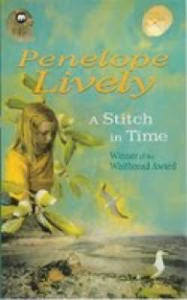
1976 - Penelope Lively, A Stitch in Time
Maria, a quiet, lonely child who loves to read and daydream goes down to stay at the seaside in a big, old house still fill with furniture from its former owners. Maria begins to imagine she can see and hear the ghost of a child who used to live there and who sewed but never finished an old sampler that hangs in the playroom. She thinks a lot about time and how it haunts us, and grows obsessed with finding out more about Harriet who she fears must have died tragically. For a time, Maria is emotionally drawn back into the past but a new friendship with the boy next door helps her look forward to the difficult transition to adulthood. It’s a lovely book, slight, simple and haunting, and reminds us just how powerful the imagination of a child can be.
1978 - Jill Paton Walsh, A Chance Child
This is another classic that I read as an adult. It is much darker and more confronting than most of the books I loved as a child. At times it is quite harrowing. It tells the story of Creep, a boy who flees abuse at home, and somehow finds himself back in the time of the Industrial Revolution. It examines child labour, which was essentially child slavery, and brought me to tears. Although it has none of the magic and wonder and adventure that I love so much about children’s literature, its depiction of the past was real and true, and showed me not to be afraid of trying to make my past as authentic as possible.
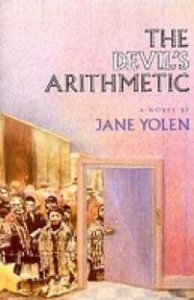
1988 - Jane Yolen ‘The Devil’s Arithmetic’
A beautiful and moving novel about the Holocaust, The Devil’s Arithmetic tells the story of Hannah who, embarrassed by her grandparents’ enduring grief over their past, finds herself transported back to a village in Poland in the 1940s. Captured by the Nazis, she is taken to a death camp where she fights to stay alive and retain her dignity. At the end, she chooses to go to the gas chamber to save a friend in a scene that had me sobbing out loud with horror and disbelief. At that moment she returns to herself in contemporary times, but with a much deeper understanding of her grandparents’ inability to shake off the past. This is truly a brilliant book, one that should be read by everyone. It has been made into a movie which I haven’t yet seen (though I would like to!)
1999 - Susan Cooper, King of Shadows
Nat Field is an American boy who uses acting as a way to escape his unhappy life. He flies to London to take part in a production of A Midsummer’s Night’s Dream at a rebuilt Globe Theatre. Somehow he finds himself waking up in 1599 in the body of another Nat, one who is to play Puck in the first ever production of Shakespeare’s play. Shakespeare himself appears and takes Nat under his wing, but Nat has to wonder how he will ever get back to his own time again.
I’m a big fan of Susan Cooper’s work and read everything she writes, so I really enjoyed this book.
I loved writing ‘The Puzzle Ring’ and I am now daydreaming about writing more time travel stories. One of their strengths is that you haave a contemporary child, with modern manners and sensibilities, thrown into the past and so having to deal with how very different things were back then.
For example, children were better seen but not heard; people had their tongues nailed to the pillory for speaking their minds; women were burnt to death for killing their abusive husbands; snails were boiled to make a tea to cure a fever; left-handed people were accused of being devil-worshippers.
Sometimes, when writing an historical novel, it is difficult to bridge the gap between the beliefs and customs of children four hundred years ago and now. Having a child of today go back in the past helps ease the imaginative leap the child has to make

